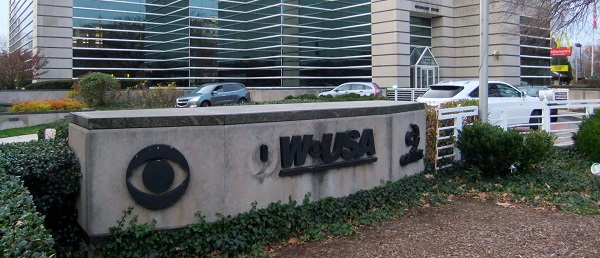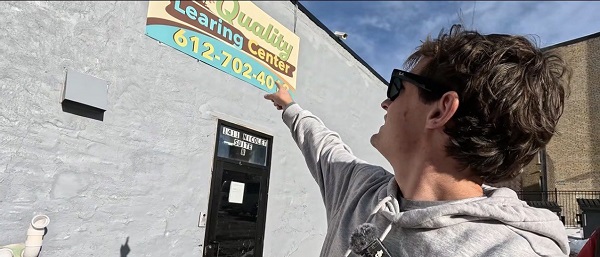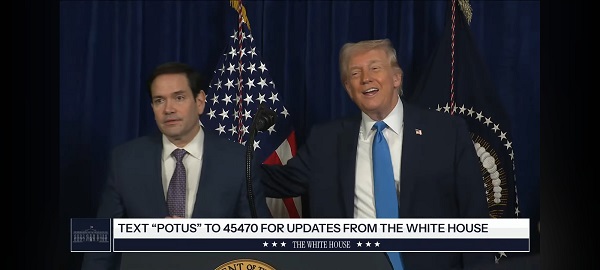News
Intersection Safety A Focus For Red Deer Mounties This Month
By Sheldon Spackman
Intersection safety and aggressive driving are the focus for Red Deer RCMP this month. Mounties say between January 1st and 12th, they responded to roughly 119 collisions, with 57 of those being at intersections.
Police say 19 of those 57 intersections collisions were caused by someone running a red light or making an unsafe turn at an intersection. Two more were caused when drivers ran stop signs. 15 collisions came about when a driver rear-ended a vehicle that was stopped at a red light, another two when drivers were rear-ended while waiting to turn at an intersection, and one more driver was rear-ended while they were stopped at a crosswalk to allow a pedestrian to cross. Seven more intersection collisions occurred when drivers were unable to stop safely on icy roads. Fortunately, most of these collisions resulted in no injury or minor injury.
RCMP say the two intersections in Red Deer with the highest collision rates are at 30th Avenue and 67th Street and at Gaetz Avenue and 67th Street. Mounties offer the following Traffic and Pedestrian Safety tips below, as well as when and how to report a collision:
Traffic safety tips:
- Drive for the weather – slow down and prepare for longer stopping times on icy streets.
- Don’t roll through stop signs, speed through intersections, or follow too closely.
- Don’t rely on having the right of way – check in all directions before turning at an intersection, whether the light is with you or against you.
- Keep intersections clear so that traffic will be able to proceed if a light changes colour.
- U-turns are prohibited at intersections controlled by lights, and where there are signs indicating that u-turns are not allowed.
- Pedestrians have the right of way in crosswalks, unmarked intersections, or at stop signs unless otherwise indicated by sign. Failure to yield to a pedestrian in a cross walk results in a $776 fine and three demerits.
- If an emergency vehicle approaches with its emergency lights activated, be cautious not to block any part of the intersection. Pull over and stop until the emergency vehicle passes through the intersection. Failure to yield to an emergency vehicle is a $233 fine and three demerit points.
Pedestrian safety tips:
- Be alert at intersections.
- Always look out for possible dangers when crossing the street.
- Make eye contact with drivers before you cross the street – when eyes lock, it’s safer to walk.
- Abide by traffic signs and signals. They are in place to protect your safety.
You can report unsafe drivers when it is safe to do so by calling the Red Deer RCMP complaint line at 403-343-5575 with a description of the car and driver, license plate and direction of travel.
Reporting collisions to RCMP:
Do you need police at the scene of a motor vehicle collision?
If there is a serious injury or fatality, call 911. If any involved vehicle is not drivable, or if any driver fails to produce registration or insurance, call the RCMP complaint line at 403-343-5575 (24 hours). If the vehicles are drivable and the above factors don’t apply, you don’t need police at the scene.
Do you need to report a collision to police after the fact?
You must make a police report after the collision if there is any injury, even a minor one, or if there appears to be $2000 or more in damage (if you aren’t sure, get an estimate first).
Exchange information with the other driver:
You need to exchange registration, insurance and drivers’ license information with the other driver(s). If you have a cell phone, it’s easiest to take photographs that information. Make sure to also take pictures of the damage to all involved vehicles and the collision location.
Report the collision in person at the downtown (4602 51 Avenue) or north (6592 58 Avenue) detachments:
You will need to provide the registration, insurance and drivers’ license information you exchanged with the other driver, damage to involved vehicles and the collision location. You will need to fill out a collision report.
Reporting a Hit and Run
If you are the victim of a hit and run, report it to the police. If you see the other vehicle, record its make, model, and license plate number – partial license plates may be useful.
Business
There’s No Bias at CBC News, You Say? Well, OK…

It’s been nearly a year since I last wrote about the CBC. In the intervening months, the Prescott memo on bias at the BBC was released, whose stunning allegations of systemic journalistic malpractice “inspired” multiple senior officials to leave the corporation. Given how the institutional bias driving problems at the BBC is undoubtedly widely shared by CBC employees, I’d be surprised if there weren’t similar flaws embedded inside the stuff we’re being fed here in Canada.
Apparently, besides receiving nearly two billion dollars¹ annually in direct and indirect government funding, CBC also employs around a third of all of Canada’s full time journalists. So taxpayers have a legitimate interest in knowing what we’re getting out of the deal.
Naturally, corporate president Marie-Philippe Bouchard has solemnly denied the existence of any bias in CBC reporting. But I’d be more comfortable seeing some evidence of that with my own eyes. Given that I personally can easily go multiple months without watching any CBC programming or even visiting their website, “my own eyes” will require some creative redefinition.
So this time around I collected the titles and descriptions from nearly 300 stories that were randomly chosen from the CBC Top Stories RSS feed from the first half of 2025. You can view the results for yourself here. I then used AI tools to analyze the data for possible bias (how events are interpreted) and agendas (which events are selected). I also looked for:
- Institutional viewpoint bias
- Public-sector framing
- Cultural-identity prioritization
- Government-source dependency
- Social-progressive emphasis
Here’s what I discovered.
Story Selection Bias
Millions of things happen every day. And many thousands of those might be of interest to Canadians. Naturally, no news publisher has the bandwidth to cover all of them, so deciding which stories to include in anyone’s Top Story feed will involve a lot of filtering. To give us a sense of what filtering standards are used at the CBC, let’s break down coverage by topic.
Of the 300 stories covered by my data, around 30 percent – month after month – focused on Donald Trump and U.S.- Canada relations. Another 12-15 percent related to Gaza and the Israel-Palestine conflict. Domestic politics – including election coverage – took up another 12 percent, Indigenous issues attracted 9 percent, climate and the environment grabbed 8 percent, and gender identity, health-care worker assaults, immigrant suffering, and crime attracted around 4 percent each.
Now here’s a partial list of significant stories from the target time frame (the first half of 2025) that weren’t meaningfully represented in my sample of CBC’s Top Stories:
- Housing affordability crisis barely appears (one of the top voter concerns in actual 2025 polls).
- Immigration levels and labour-market impact.
- Crime-rate increases or policing controversies (unless tied to Indigenous or racialized victims).
- Private-sector investment success stories.
- Any sustained positive coverage of the oil/gas sector (even when prices are high).
- Critical examination of public-sector growth or pension liabilities.
- Chinese interference or CCP influence in Canada (despite ongoing inquiries in real life).
- The rest of the known galaxy (besides Gaza and the U.S.)
Interpretation Bias
There’s an obvious pattern of favoring certain identity narratives. The Indigenous are always framed as victims of historic injustice, Palestinian and Gazan actions are overwhelmingly sympathetic, while anything done by Israelis is “aggression”. Transgender representation in uniformly affirmative while dissent is bigotry.
By contrast, stories critical of immigration policy, sympathetic to Israeli/Jewish perspectives, or skeptical of gender medicine are virtually non-existent in this sample.
That’s not to say that, in the real world, injustice doesn’t exist. It surely does. But a neutral and objective news service should be able to present important stories using a neutral and objective voice. That obviously doesn’t happen at the CBC.
Consider these obvious examples:
- “Trump claims there are only ‘2 genders.’ Historians say that’s never been true” – here’s an overt editorial contradiction in the headline itself.
- “Trump bans transgender female athletes from women’s sports” which is framed as an attack rather than a policy debate.
And your choice of wording counts more than you might realize. Verbs like “slams”, “blasts”, and “warns” are used almost exclusively describing the actions of conservative figures like Trump, Poilievre, or Danielle Smith, while “experts say”, “historians say”, and “doctors say” are repeatedly used to rebut conservative policy.
Similarly, Palestinian casualties are invariably “killed“ by Israeli forces – using the active voice – while Israeli casualties, when mentioned at all, are described using the passive voice.
Institutional Viewpoint Bias
A primary – perhaps the primary job – of a serious journalist is to challenge the government’s narrative. Because if journalists don’t even try to hold public officials to account, then no one else can. Even the valuable work of the Auditor General or the Parliamentary Budget Officer will be wasted, because there will be no one to amplify their claims of wrongdoing. And Canadians will have no way of hearing the bad news.
So it can’t be a good sign when around 62 percent of domestic political stories published by the nation’s public broadcaster either quote government (federal or provincial) sources as the primary voice, or are framed around government announcements, reports, funding promises, or inquiries.
In other words, a majority of what the CBC does involves providing stenography services for their paymasters.
Here are just a few examples:
- “Federal government apologizes for ‘profound harm’ of Dundas Harbour relocations”
- “Jordan’s Principle funding… being extended through 2026: Indigenous Services”
- “Liberal government announces dental care expansion the day before expected election call”
Agencies like the Bank of Canada, Indigenous Services Canada, and Transportation Safety Board are routinely presented as authoritative and neutral. By contrast, opposition or industry critiques are usually presented as secondary (“…but critics say”) or are simply invisible. Overall, private-sector actors like airlines, oil companies, or developers are far more likely to be criticized.
All this is classic institutional bias: the state and its agencies are the default lens through which reality is filtered.
Not unlike the horrors going on at the BBC, much of this bias is likely unconscious. I’m sure that presenting this evidence to CBC editors and managers would evoke little more than blank stares. This stuff flies way below the radar.
But as one of the AI tools I used concluded:
In short, this 2025 CBC RSS sample shows a very strong and consistent left-progressive institutional bias both in story selection (agenda) and in framing (interpretation). The outlet functions less as a neutral public broadcaster and more as an amplifier of government, public-sector, and social-progressive narratives, with particular hostility reserved for Donald Trump, Canadian conservatives, and anything that could be construed as “right-wing misinformation.”
And here’s the bottom line from a second tool:
The data reveals a consistent editorial worldview where legitimate change flows from institutions downward, identity group membership is newsworthy, and systemic intervention is the default solution framework.
You might also enjoy:
Is Updating a Few Thousand Readers Worth a Half Million Taxpayer Dollars? |
||||||
|
||||||
| Plenty has been written about the many difficulties faced by legacy news media operations. You might even recall reading about the troubled CBC and the Liberal government’s ill-fated Online News Act in these very pages. Traditional subscription and broadcast models are drying up, and on-line ad-based revenues are in sharp decline. | ||||||
|
Subscribe to The Audit.
For the full experience, upgrade your subscription.
Daily Caller
Bari Weiss Reportedly Planning To Blow Up Legacy Media Giant


From the Daily Caller News Foundation
CBS News editor-in-chief Bari Weiss is reportedly planning to dramatically change the network’s coverage to eliminate left-wing bias and make the newsroom more efficient.
Weiss has been handed a mandate for change by Paramount SkyDance’s David Ellison, the CEO of CBS News’ parent company, which bought her company, The Free Press, for $150 million, according to The Wall Street Journal (WSJ). Ellison wants Weiss to bring “news that reflects reality” and journalism that “doesn’t seek to demonize, but seeks to understand.”
“I wanna blow things up,” Weiss has reportedly told her colleagues during meetings.
During the hiring process, Weiss has reached out to outside talent directly rather than speaking to their agents, which is considered the traditional method of communication, according to the WSJ. She has also reportedly been highly involved in booking guests in an attempt to fix the network’s ratings and make a lasting change.
Weiss is focused on trying to reshape “CBS Evening News,” which has consistently ranked third place in comparison to the evening programs on ABC News and NBC News. “CBS Evening News” typically averages around 4 million total viewers. On the week of November 3, the program garnered 4.2 million total viewers and 564,000 viewers in the 25 to 54 key demographic, while “NBC Nightly News” and “ABC World News Tonight” averaged 7.2 million and 6.6 million total viewers, as well as 929,000 and 883,000 in the 25-54 demo, according to AdWeek.
John Dickerson, who currently hosts “CBS Evening News,” announced on Oct. 27 that he will be departing the network in January. Weiss has reportedly considered poaching CNN’s Anderson Cooper and Fox News’ Bret Baier, though Baier said he will remain at Fox News in the short-term since his contract goes through the end of 2028, according to the WSJ.
A source close to Cooper told the WSJ that the CNN host is not interested in hosting “CBS Evening News.”
“CBS Mornings” host Gayle King’s contract is up in early 2026, prompting Weiss to reportedly consider finding a cheaper alternative to her $15 million salary, according to WSJ.
The median age of viewers who watch CBS News is 58 years old, according to a Pew Research survey.
When she stepped into her role, Weiss sent emails to staff asking them to outline their jobs and provide feedback on “how we can make CBS News the most trusted news organization in America and the world.” Weiss said she would have had to “throw in the towel a very, very long time ago” if she were concerned about the negative press her decisions will receive.
Approximately 100 staffers were laid off once Weiss took over in October, which were part of Paramount’s layoffs of about 1,000 employees. The CBS News Race and Culture Unit, founded in July 2020, was completely wiped out as part of the layoffs.
-

 International2 days ago
International2 days ago“Captured and flown out”: Trump announces dramatic capture of Maduro
-

 International2 days ago
International2 days agoTrump Says U.S. Strike Captured Nicolás Maduro and Wife Cilia Flores; Bondi Says Couple Possessed Machine Guns
-

 Energy2 days ago
Energy2 days agoThe U.S. Just Removed a Dictator and Canada is Collateral Damage
-

 Haultain Research2 days ago
Haultain Research2 days agoTrying to Defend Maduro’s Legitimacy
-

 International2 days ago
International2 days agoUS Justice Department Accusing Maduro’s Inner Circle of a Narco-State Conspiracy
-

 Business2 days ago
Business2 days agoVacant Somali Daycares In Viral Videos Are Also Linked To $300 Million ‘Feeding Our Future’ Fraud
-

 International2 days ago
International2 days agoU.S. Claims Western Hemispheric Domination, Denies Russia Security Interests On Its Own Border
-

 Daily Caller1 day ago
Daily Caller1 day agoTrump Says US Going To Run Venezuela After Nabbing Maduro






